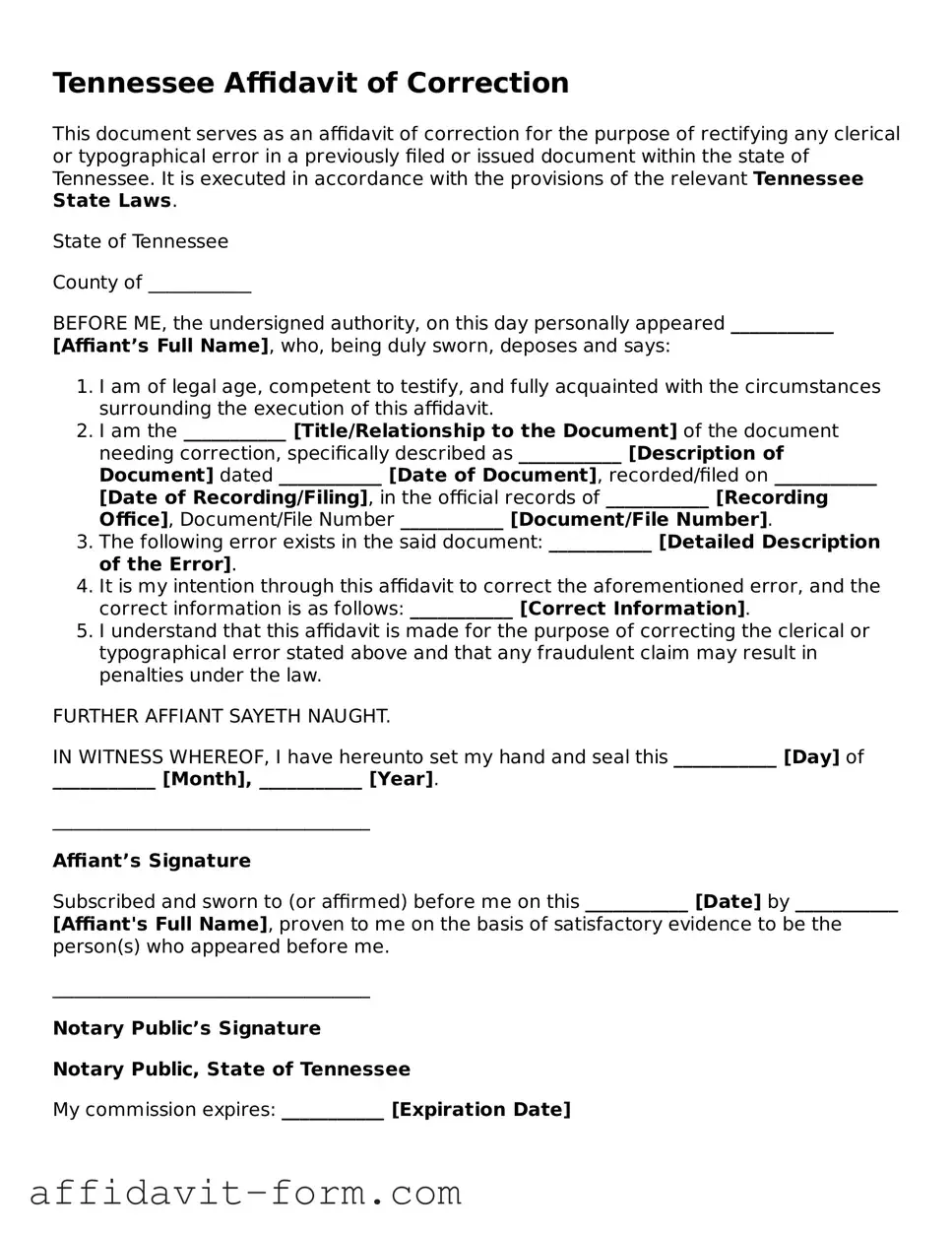Tennessee Affidavit of Correction
This document serves as an affidavit of correction for the purpose of rectifying any clerical or typographical error in a previously filed or issued document within the state of Tennessee. It is executed in accordance with the provisions of the relevant Tennessee State Laws.
State of Tennessee
County of ___________
BEFORE ME, the undersigned authority, on this day personally appeared ___________ [Affiant’s Full Name], who, being duly sworn, deposes and says:
- I am of legal age, competent to testify, and fully acquainted with the circumstances surrounding the execution of this affidavit.
- I am the ___________ [Title/Relationship to the Document] of the document needing correction, specifically described as ___________ [Description of Document] dated ___________ [Date of Document], recorded/filed on ___________ [Date of Recording/Filing], in the official records of ___________ [Recording Office], Document/File Number ___________ [Document/File Number].
- The following error exists in the said document: ___________ [Detailed Description of the Error].
- It is my intention through this affidavit to correct the aforementioned error, and the correct information is as follows: ___________ [Correct Information].
- I understand that this affidavit is made for the purpose of correcting the clerical or typographical error stated above and that any fraudulent claim may result in penalties under the law.
FURTHER AFFIANT SAYETH NAUGHT.
IN WITNESS WHEREOF, I have hereunto set my hand and seal this ___________ [Day] of ___________ [Month], ___________ [Year].
__________________________________
Affiant’s Signature
Subscribed and sworn to (or affirmed) before me on this ___________ [Date] by ___________ [Affiant's Full Name], proven to me on the basis of satisfactory evidence to be the person(s) who appeared before me.
__________________________________
Notary Public’s Signature
Notary Public, State of Tennessee
My commission expires: ___________ [Expiration Date]
